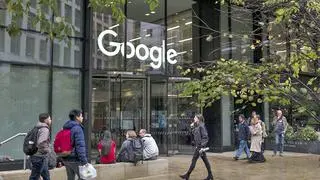Computer Maintenance Corporation, which began as a State-run IT services company in 1975, has had a transformational journey since then. Tata Consultancy Services (TCS) acquired it in 2001, following which it was rechristened CMC. It became a fully-privatised company in 2004.
At a time when large IT companies are struggling, this mid-size firm has been posting profits quarter after quarter.
CMC, now with revenues of Rs 1,403 crore (nine months ended December 31, 2012), is aiming to become a $1-billion firm by 2020, says its Managing Director and Chief Executive Officer R. Ramanan. Excerpts from an interview are below.
How was the journey for CMC after TCS acquisition?
When we started the journey, we had a less than 3.5-per cent operating margin.
We had Rs 300 crore of deficit, more than Rs 300 crore in borrowings, which is very unusual for an IT company. Less than 5 per cent of our business came from the international market and more than 75 per cent of our business was in low-value services.
But today, we have a 17-18 per cent operating margin. We grew by 31 per cent on revenues and are cash positive now with Rs 300 crore and funding for over Rs 400 crore of infrastructure using our own money.
Also, 68 per cent of our business comes from international clients as of the last quarter.
What are the synergies between TCS and CMC?
We are focussed on embedded and real-time systems. These are capabilities CMC had, but did not really exploit. CMC was strong on hardware and maintenance. TCS knew about hardware engineering and they are strong in software.
So we combined these two capabilities and today it is one of the fastest growing groups (verticals) within the company. We do R&D outsourcing for high-tech companies or companies which want solutions for industrial control, office automation and communications.
But when it comes to bidding for Government projects, how do you go about it as a group company?
TCS is a natural partner for us to address such projects. CMC brings in pan-India infrastructure management capability, digitisation, education and training, and core solutions that we have developed. For example, TCS has conducted projects for Cochin and Bangalore port trusts by leveraging the core solutions that CMC has. From the customer’s point of view, it is one organisation – either TCS or CMC bids for a project.
Revenue is shared on the basis of the work each company does. As CMC is also a listed company, the interests of the shareholders are protected for both TCS and CMC.
This is a time when a lot of companies are struggling…
Niche areas where CMC is in, such as public transportation systems and shipping, mining, and infrastructure and banking and insurance, continue to grow.
You are expecting to be a $1-billion company by 2020?
We want to become a billion dollar company at the earliest. By 2020, we want to be among the top 20 global systems integration (SI) and engineering companies and that would mean we should be at least a billion-dollar company in the SI space.
What are the research and development and investments being made in the Indian market?
As part of the Tata group, the Indian market is important for us from the long-term sustainability point of view.
This market is going to grow and those who are there in this market will reap the benefits.
We are looking at investing anywhere between three-seven per cent of the total revenues in R&D every year.
ronendrasingh.s@thehindu.co.in
rajesh.kurup@thehindu.co.in








Comments
Comments have to be in English, and in full sentences. They cannot be abusive or personal. Please abide by our community guidelines for posting your comments.
We have migrated to a new commenting platform. If you are already a registered user of TheHindu Businessline and logged in, you may continue to engage with our articles. If you do not have an account please register and login to post comments. Users can access their older comments by logging into their accounts on Vuukle.